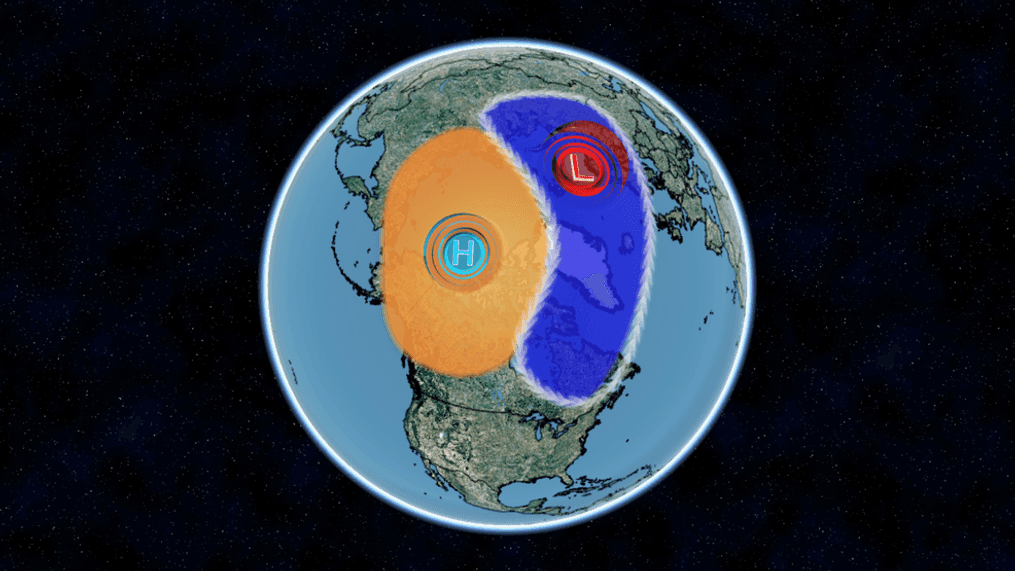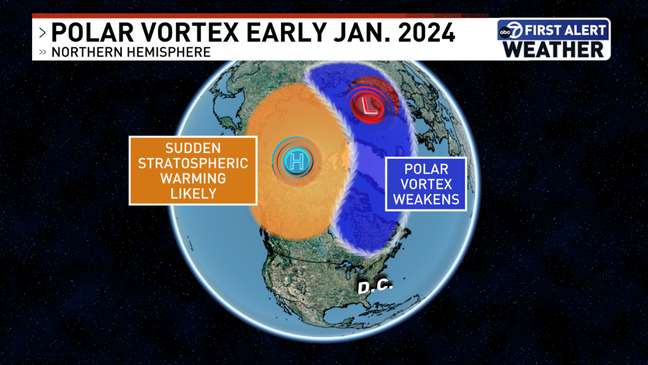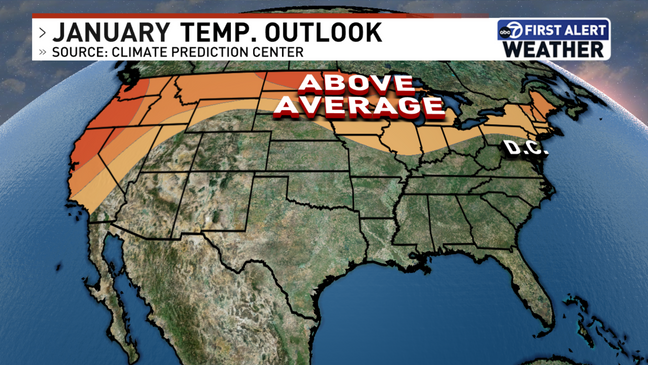The 'polar vortex' may appear in the US in January
WASHINGTON (7News) — Early indications of a weakening polar vortex could send Arctic air into North America next month.
Much of the U.S. is overdue for some cold air and winter-like temperatures as December 2023 will be one of the warmest on record for many cities.
The term "polar vortex" has been used over the last decade as a way to describe very cold temperatures moving into the U.S., usually causing ice and snow and dangerously cold wind chills. The most recent and devastating "polar vortex" event was the 2021 deep freeze which brought record low temperatures across the Plains and disrupted the power grid in Texas.
Understanding the polar vortex
Even as Arctic air is polar - coming from the north pole - the polar vortex lives in the stratosphere, about 10 to 30 miles above the Earth's surface.
Usually every other year, sometimes once a year, the polar vortex weakens, being pushed off of the pole or split into two areas covering far northern latitudes.
As jet stream winds in the lower atmosphere interact with the displaced polar vortex, this sends Arctic air south toward the mid-latitudes, sometimes into the U.S.
Computer models for about a week have been showing the polar vortex weakening and a sudden stratospheric warming event occurring.
Sudden stratospheric warming does not happen every year, but is a significant sign of a weakening polar vortex. Large-scale Rossby waves get pushed high into the stratosphere, causing the winds of the polar vortex to weaken and perhaps reverse and become easterly. This leads to cold air descending to the lower atmosphere, closer to the surface and the stratosphere, high in the atmosphere warming rapidly.
What is likely in January 2024
Step one to potential prolonged Arctic air would be a sudden stratospheric warming event and a weakening polar vortex. Computer models are suggesting this happening in early January.
After this occurs, it could take one to three weeks, depending on how cold, for the Arctic air to spill into the mid-latitudes.
There is no guarantee the Arctic air comes into the United States. The polar vortex and jet stream winds may send it over Europe or Asia. The "Greenland Block" pattern could increase the chances for cold air in the US, however it is too early to determine if this pattern will be in place by mid-January.
Wherever the cold air heads, there will be guaranteed chances for snow and ice.
As of Dec. 29, 2023, the Climate Prediction Center's temperatures outlook shows equal chances for above or below average temperatures occurring during the entire month.
As Arctic air outbreaks look more promising for the United States based on forecast models, outlooks from the Climate Prediction Center will show higher chances for below-average temperatures.


